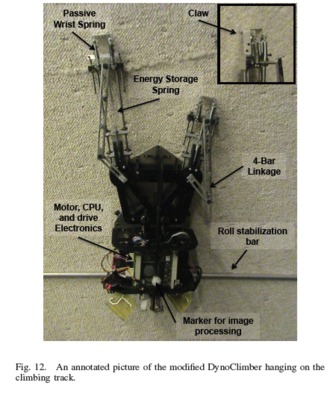
This paper describes the inspiration, design, analysis, implementation of and experimentation with the first dynamical vertical climbing robot. Biologists have proposed a pendulous climbing model that abstracts remarkable similarities in dynamic wall scaling behavior exhibited by radically different animal species. We study numerically a version of that pendulous climbing template dynamically re-scaled for applicability to utilitarian payloads with conventional electronics and actuation. This simulation study reveals that the incorporation of passive compliance can compensate for an artifact’s poorer power density and scale disadvantages relative to biology. However the introduction of additional dynamical elements raises new concerns about stability regarding both the power stroke and limb coordination that we allay via mathematical analysis of further simplified models. Combining these numerical and analytical insights into a series of design prototypes, we document the correspondence of the various models to the variously scaled platforms and report that our approximately two kilogram platform climbs dynamically at vertical speeds up to 1.5 bodylengths per second. In particular, the final 2.6 kg final prototype climbs at an average steady state speed of 0.66 m/s against gravity on a carpeted vertical wall, in rough agreement with our various models’ predictions.

